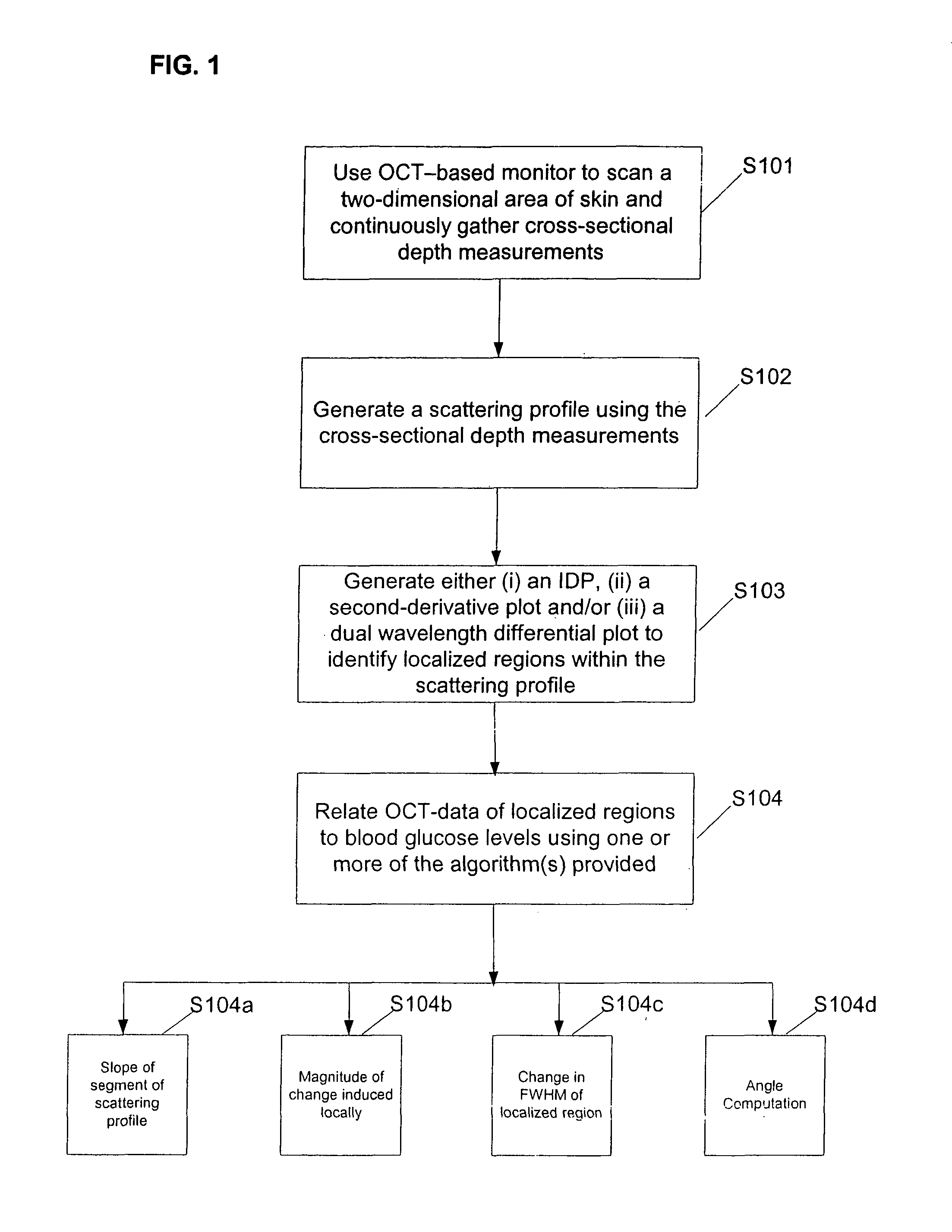Methods for noninvasively measuring analyte levels in a subject
a non-invasive and subject-based technology, applied in the field of non-invasively measuring blood glucose or other analyte levels in subjects, can solve the problems of low compliance level of diabetic patients, low sensitivity (signal-to-noise ratio) for glucose concentrations at clinically relevant levels
- Summary
- Abstract
- Description
- Claims
- Application Information
AI Technical Summary
Benefits of technology
Problems solved by technology
Method used
Image
Examples
Embodiment Construction
[0027]According to an embodiment of the present invention, a method for measuring blood glucose levels includes the step of utilizing an OCT-based sensor to take scattering cross-sectional depth measurements on a small area of biological tissue or skin. The OCT-based sensor can be a non-imaging system such as that described in detail in U.S. application Ser. No. 10 / 916,236. In some embodiments, a two-dimensional area of the skin can be scanned, preferably either in a circular pattern, e.g., with a radius no greater than about 2 mm, or in a filled disk or filled rectangular pattern where the pattern is drawn randomly. As the OCT-based sensor scans the two-dimensional pattern continuously, the sensor continuously collects data corresponding to cross-sectional depth measurements within the biological tissue. Other embodiments can utilize an OCT-based sensor to obtain cross-sectional depth measurements with two-dimensional scanning.
[0028]By continuously acquiring a two-dimensional scan ...
PUM
 Login to View More
Login to View More Abstract
Description
Claims
Application Information
 Login to View More
Login to View More - R&D
- Intellectual Property
- Life Sciences
- Materials
- Tech Scout
- Unparalleled Data Quality
- Higher Quality Content
- 60% Fewer Hallucinations
Browse by: Latest US Patents, China's latest patents, Technical Efficacy Thesaurus, Application Domain, Technology Topic, Popular Technical Reports.
© 2025 PatSnap. All rights reserved.Legal|Privacy policy|Modern Slavery Act Transparency Statement|Sitemap|About US| Contact US: help@patsnap.com



